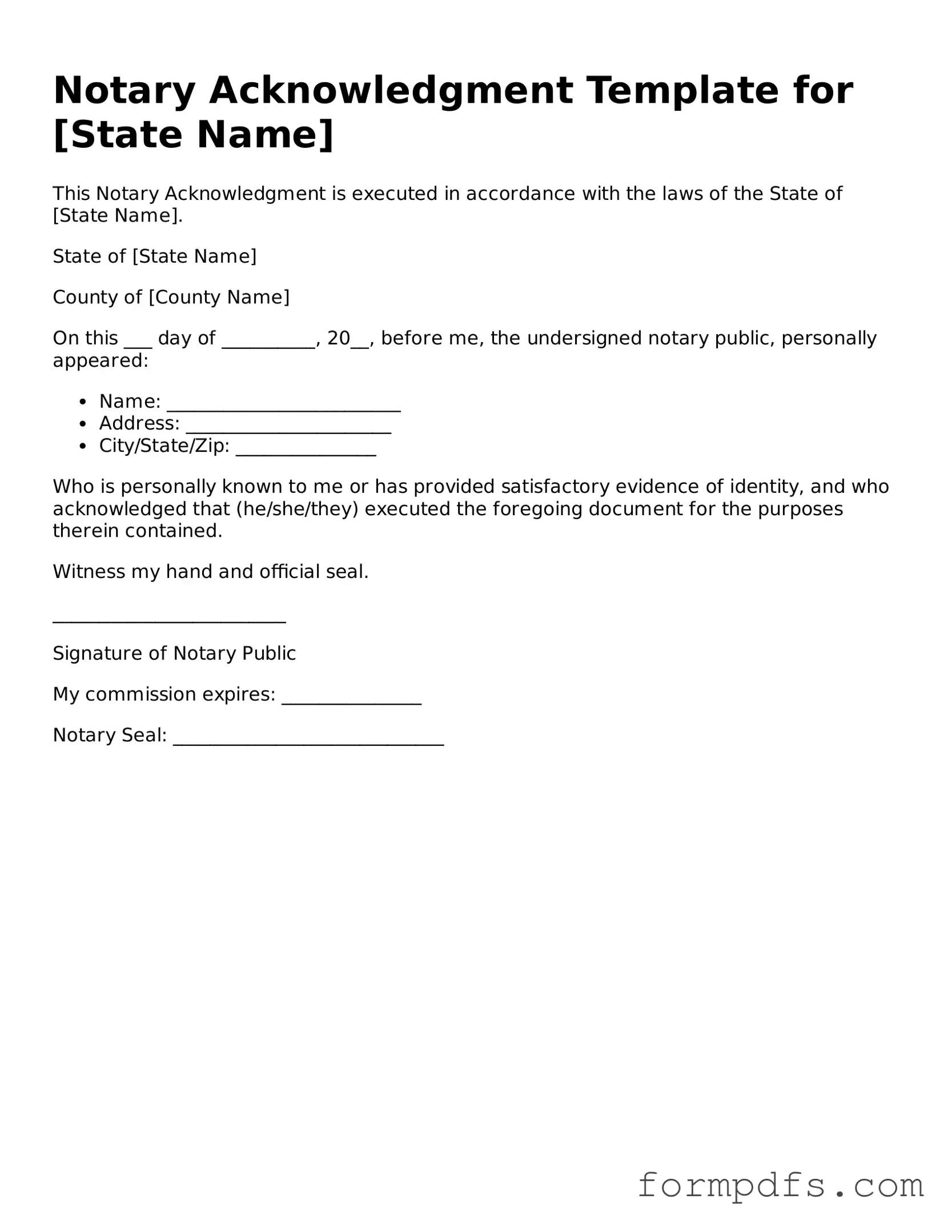What is a Notary Acknowledgement form?
A Notary Acknowledgement form is a document used to verify the identity of the signer and confirm that they willingly signed the document in question. This form is often required for legal documents, such as deeds or contracts, to ensure that the signatures are authentic and that the signers understand the content of what they are signing.
Who can act as a notary public?
A notary public is an individual authorized by the state to perform notarial acts. Generally, notaries must be at least 18 years old, a resident of the state where they are commissioned, and pass a background check. Each state has its own requirements, so it's important to check local laws for specifics.
Why is a Notary Acknowledgement necessary?
A Notary Acknowledgement is necessary to provide legal assurance that the document is valid. It helps prevent fraud and ensures that the parties involved are entering into agreements knowingly and voluntarily. Many institutions, such as banks and courts, require notarized documents for this reason.
How do I complete a Notary Acknowledgement form?
To complete a Notary Acknowledgement form, the signer must appear before the notary public. The signer will need to provide a valid form of identification. The notary will then fill out the form, including details such as the date, the signer's name, and the type of document being acknowledged. The notary will also sign and affix their seal to the form.
Is there a fee for notarization?
Yes, notaries may charge a fee for their services, which varies by state and the type of document being notarized. Some states have set maximum fees, while others allow notaries to determine their own rates. It's advisable to ask about fees before scheduling an appointment.
Can a Notary Acknowledgement be done remotely?
Some states allow remote notarization, where the signer and notary can meet via video conference. However, this option is not available in every state, and specific rules must be followed. Always check your state’s regulations to see if remote notarization is permitted and what the requirements are.
What should I do if my Notary Acknowledgement is rejected?
If your Notary Acknowledgement is rejected, first determine the reason for the rejection. Common issues include missing information, incorrect notarization, or the notary's seal not being clear. Address any issues promptly by contacting the notary or seeking assistance from another notary to ensure your document is properly acknowledged.
